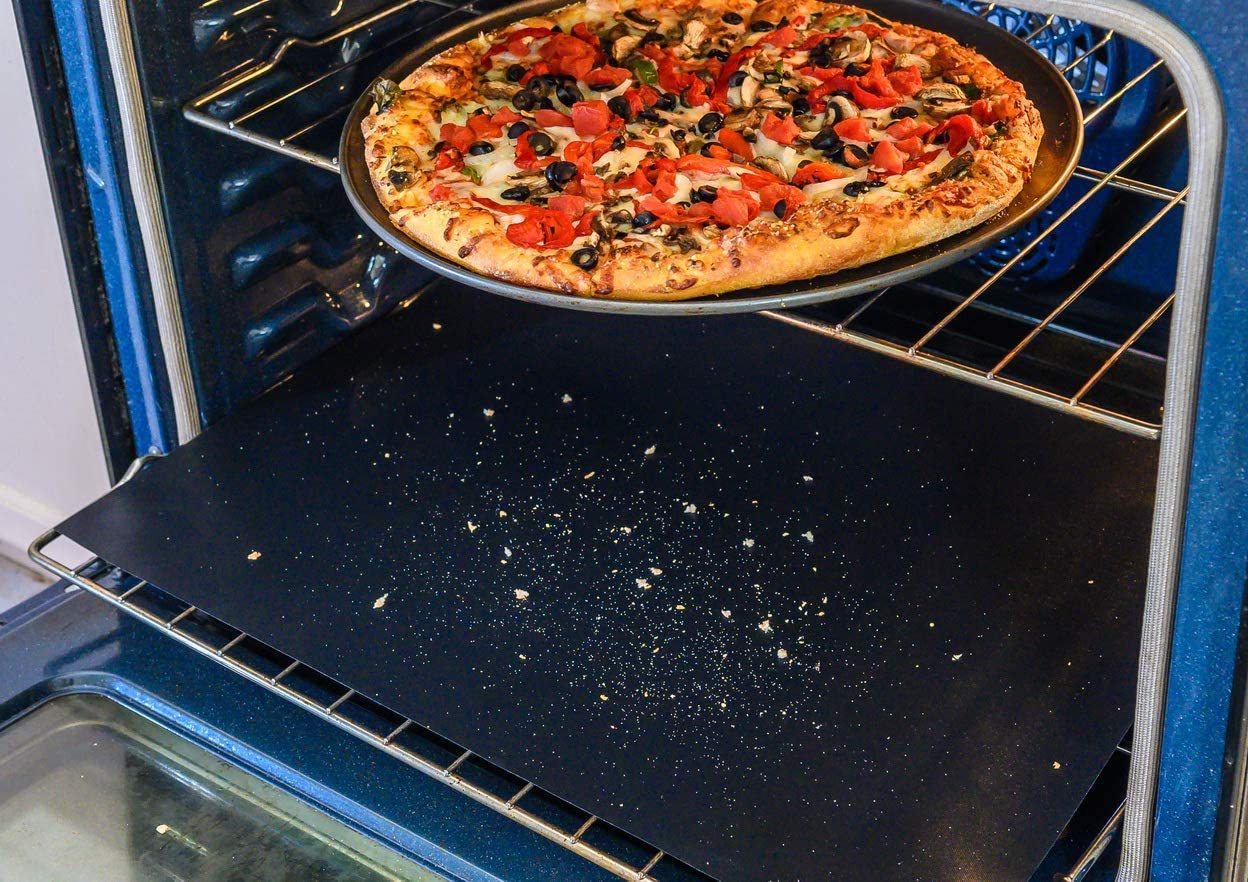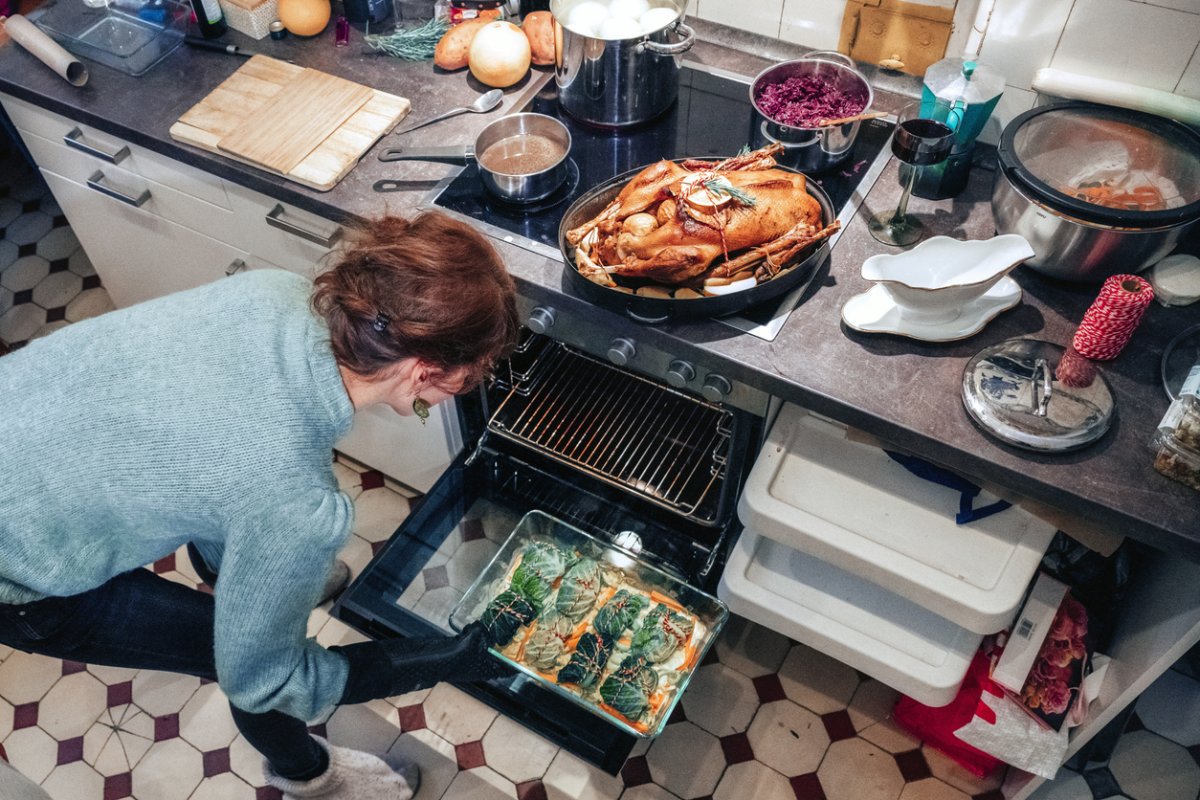

We may earn revenue from the products available on this page and participate in affiliate programs. Learn More ›
Avid home cooks put their ovens into overdrive not just during the holidays, but year-round. Inevitably, what doesn’t land on the dinner table winds up splattered or dripped on the oven walls, roof, floor, racks, or door glass. If neglected, these caked-on remains become tough to remove, requiring far more than a swipe with a soapy rag. That’s when it’s time for a thorough cleaning—something you should do at least every 3 to 6 months to prevent burning residue from affecting the flavor of your food or, worse, catching fire. But before you grab a rag and a can of commercial cleanser, study up on the best way to clean an electric oven using gentle, yet effective, methods.
Tools & Materials
Bobvila.com may earn a commission from purchases made through these links.
Project Overview
Working Time: 2 hours
Total Time: 10 to 11 hours (including soaking time)
Skill Level: Beginner
Estimated Cost: Less than $8
Before You Begin
Before you clean your oven for the first time, be sure to consult the manufacturer’s instructions for cleaning. Certain parts of the oven, such as the racks, gasket, and door glass, may require special care. Always remove loose debris before you apply cleaning solutions. It’s also a good idea to spread newspaper in front of the oven to catch drips and food particles.
How to Clean an Oven Without Oven Cleaner
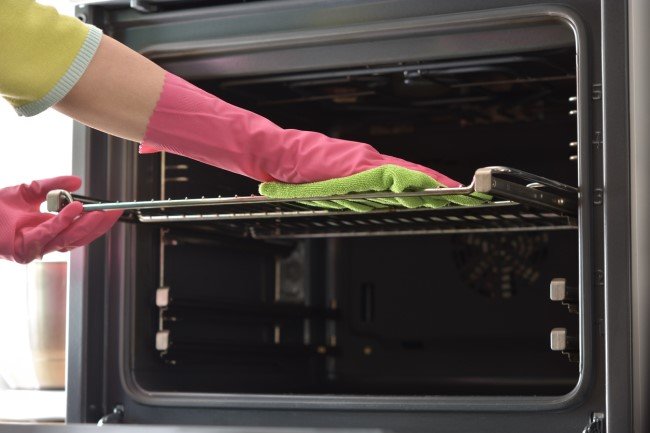
Some home cooks wonder, can you use oven cleaner on an electric oven? In some cases you can but a better question is, do you really want to Oven cleaners are undeniably effective at cutting through grease and baked-on residue, but the very chemicals that make them so powerful also make them potentially harmful. Commercial oven cleaners tend to be highly alkaline and caustic. When inhaled, the fumes can lead to irritation, coughing, and even shortness of breath, and skin contact can cause burns and irritation. There’s no need to expose yourself and your family to these health risks when you can have a sparkling clean oven without doing so. Here’s how to clean an electric oven naturally, using household products you probably have on hand.
Homemade oven cleaners mixed from pantry staples are inexpensive, natural, and safe, and they can be very effective. It’s important to note that you should use different approaches for different parts of the oven:
- For oven racks: You will need a box of baking soda and a spray bottle filled with white vinegar. (You will need enough baking soda to spread a ⅛-inch layer over the oven racks.)
- For the oven walls, roof, floor, and door glass: In a large bowl, stir together 2 cups baking soda, 3/4 cup water, and, if desired for fragrance, 8 to 16 drops of essential oil to form a spreadable paste.
RELATED: How To Clean Every Appliance in Your Home
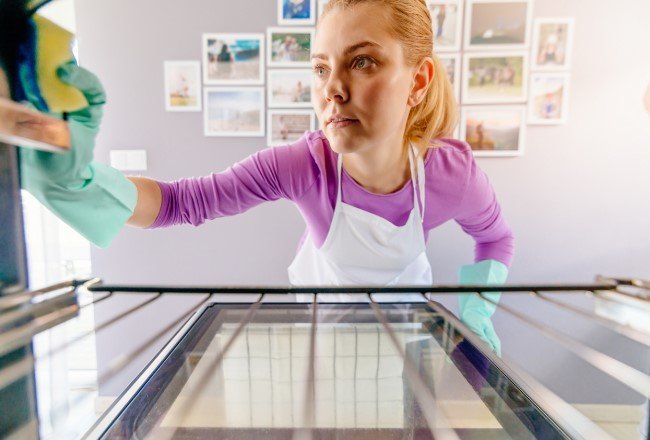
STEP 1: Start with a cool, empty oven.
Before manually cleaning an electric oven, turn it off and let it cool completely. Remove any pans, pots, and oven racks so you can easily access the roof, floor, and walls of the unit. Use a spatula to gently scrape away any debris or loose food residue from the oven chamber.
STEP 2: Consult the manufacturer’s manual for cleaning recommendations—and follow them to the letter.
Read your oven manual to find out which components can be safely cleaned without causing damage. Generally, steer clear of the heating elements; cleaning them could lead to scratching or, if still warm, they could spark or flame. Similarly, take care with the flexible gasket located along the interior of the oven door, which prevents heat from escaping. Avoid getting cleansers on the gasket, and never scrub it. In fact, many manufacturers explicitly state that you should not clean the gasket, which is another good reason to consult your manual.
STEP 3: Cut cleaning time by presoaking oven components.
Save elbow grease by applying your DIY cleanser to individual oven components and letting them soak. Doing so will loosen the grime and cut down on the need for heavy-duty scrubbing later on. So, put on gloves and apply cleanser to the following components:
- For the oven racks: Lay the racks side by side in an empty bathtub or a large kitchen sink, sprinkle each rack with a 1/8-inch-thick layer of baking soda, and then spritz with vinegar from a spray bottle. When the baking soda stops foaming, fill the tub or sink with enough hot water to submerge the racks, then let them sit overnight.
- For the oven interior: Wearing gloves, spread the homemade oven cleaner over all interior oven surfaces, avoiding only the heating elements. Let the baking soda paste sit in the oven for 6 to 8 hours.
- Oven door glass: Spread homemade oven cleaner evenly over the glass on the interior of the oven door. Allow it to sit for 15 minutes.
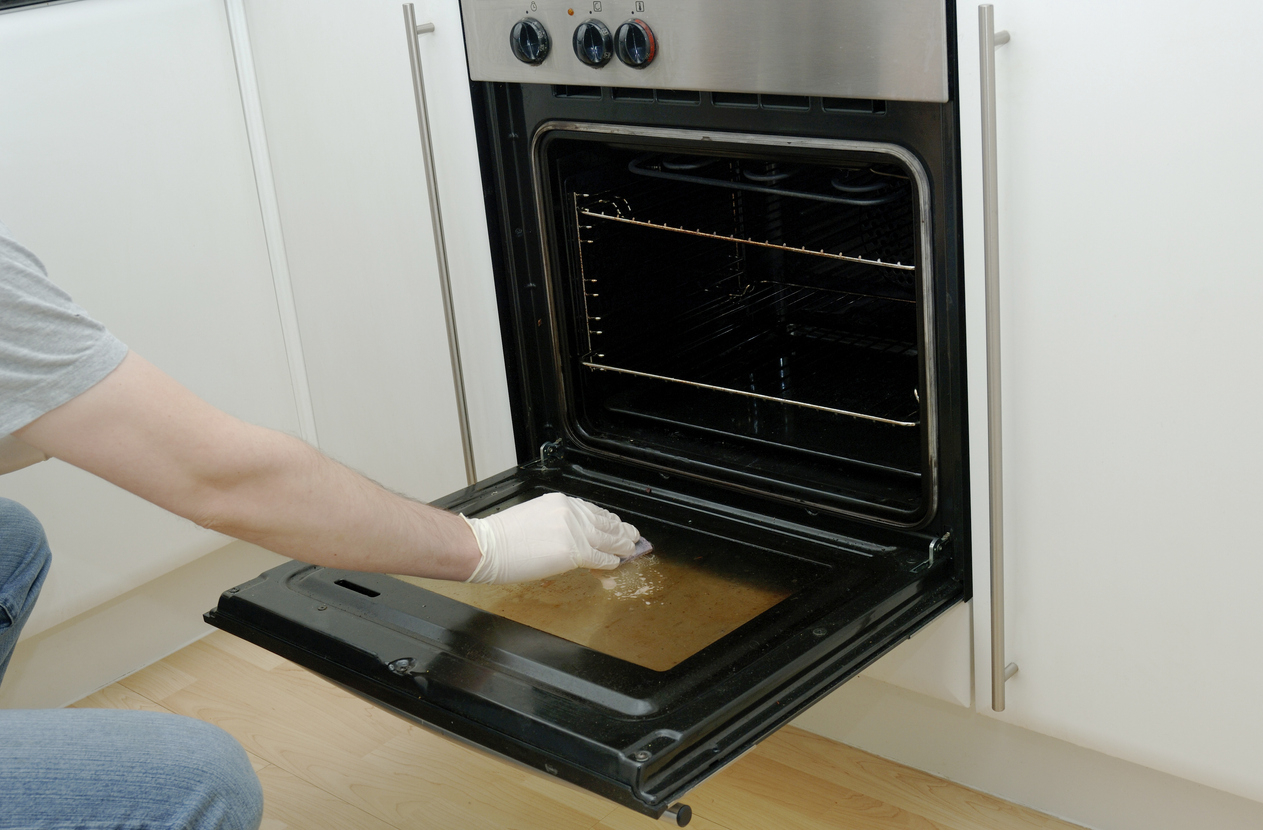
STEP 4: Clean each oven component carefully, using the tools and materials best suited to it.
After presoaking each oven component, you’ll need to use slightly different tools and approaches to get everything squeaky clean. Start with the oven glass, the surface that requires the least soaking time, then move on to the oven chamber, and finish up with the racks.
- Oven door glass: Use a damp microfiber cloth to wipe away loosened grime. (A plastic scraper is great for stubborn splotches.) To remove residual baking soda paste, rinse the oven door glass with water and wipe dry. Wipe in just one direction to ensure a streak-free shine.
- Oven interior: Using a damp sponge, wipe the side walls first and then the rear, working from the top down so that ash and debris fall to the oven floor. Wipe the top and the bottom of the chamber, from back to front. Rinse the sponge with clean water and repeat until no baking soda remains, then wipe dry.
- Oven racks: Drain the tub, and scrub each rack with a rag or sponge to slough off the grease and loosened debris. Rinse and dry the racks before returning them to the oven.
Once you’ve cleaned the interior of the oven you’ve finished the toughest part of the job, but you’re not done yet. Finish up with these quick tasks:
- If there is a drawer under the oven, whether it’s a warming drawer or just for storage, wipe or vacuum up any loose debris that has fallen in. Then, with a damp rag or sponge, wipe down the entire compartment.
- Clean the stove’s exterior, using either a solution of vinegar and warm water or just warm, soapy water. (As always, check the manufacturer’s instructions for recommended cleaners.)
- Remove your stove’s knobs, clean them with warm, soapy water, then dry and replace them.
Now that your stove is clean inside and out, you can get back to cooking right away without having to worry about toxic residue or unpleasant fumes from commercial cleaners.
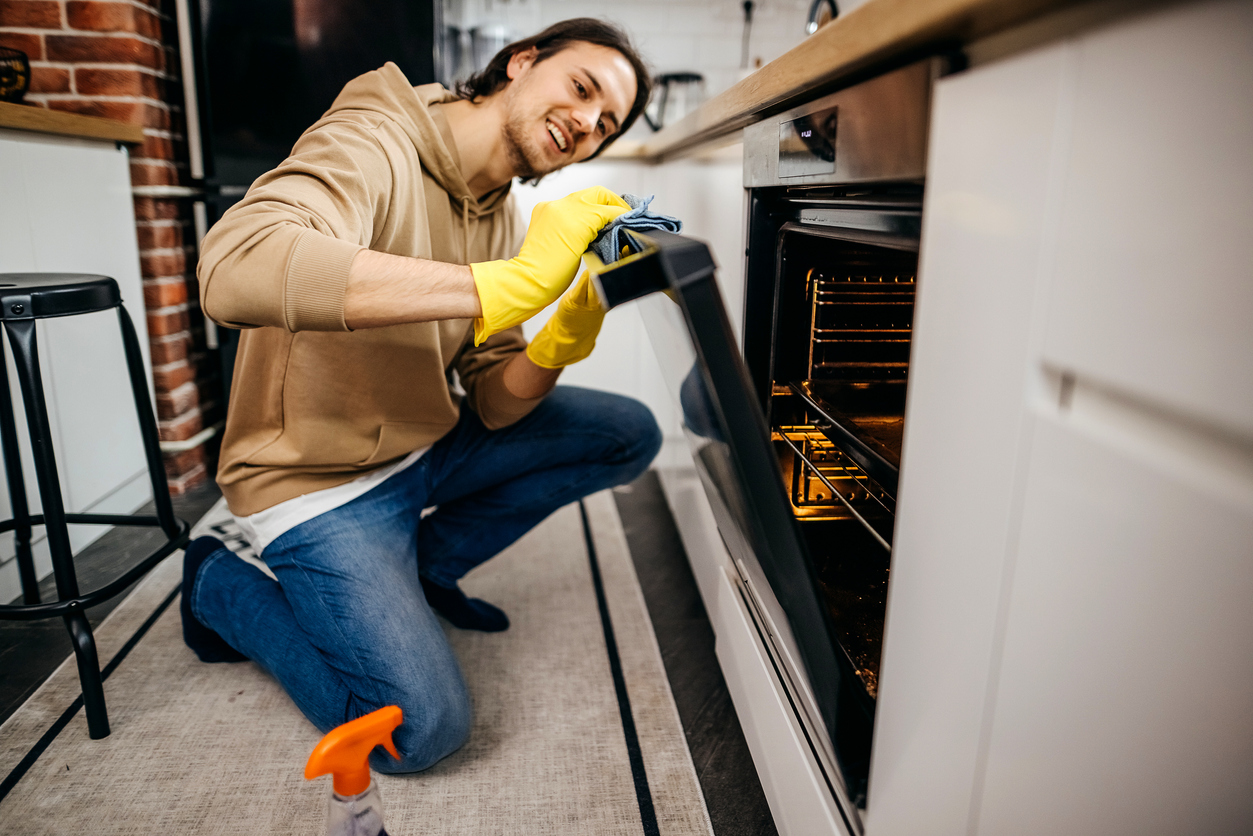
Cleaning Tips for Electric Ovens
Cleaning the oven is probably no one’s favorite chore, but there are steps you can take to make this unavoidable task easier and quicker. Simplify your cleaning regimen by following these tips:
- Deal with fresh spills promptly. Wipe up spills and splatters as they happen, and periodically sweep out stray crumbs to cut down on unpleasant burning odors.
- Prevent spills before they happen. When appropriate, use lids or foil to cover cookware. When baking pies, casseroles, and other notoriously drippy foods, place the pan on a baking sheet to collect spills.
- Use baking soda to stave off smoke from fresh oven spills. While you’re cooking, if liquid or food spills into the oven, put on an oven mitt, open the oven door, and sprinkle baking soda directly over the spill to keep it from smoking. If the spill isn’t easily accessible or if the burning residue is already causing the oven to smoke, turn it off and let it cool completely. Then, open the oven door, remove any debris from the oven chamber with tongs, and wipe up the remains with a sponge dampened with soapy water.
- Never use aluminum foil to protect your oven floor. Many people line the bottom of their oven with a sheet of aluminum foil to catch food spills and prevent stains. Don’t do this! Aluminum foil can reflect heat or block heat in both electric and gas ovens, leading to undercooked or overcooked food. Worse, it can melt and permanently damage the oven. Instead, cooks who are wondering how to clean the bottom of an electric oven should consider placing an oven mat made of fiberglass or other heat-resistant materials (e.g., Grill Magic Oven Liners) on the oven floor. As long as you position them so they’re not touching heating elements, these mats offer greater heat resistance than foil and are safer options for protecting your oven.
Care Tips for Self-Cleaning Ovens
A self-cleaning oven can be a huge convenience, but it also has special care requirements. Cleaning cycles work by heating the oven to temperatures upwards of 600 degrees Fahrenheit. This extreme heat burns up accumulated spills and greasy spots, turning them to white ash that can then be easily wiped up.
Some websites recommend not even using the self-cleaning cycle, noting that the high temperatures can damage or wear out parts. Another downside of the self-clean feature is that when an oven heats up during the cycle, it releases potentially harmful fumes. Because of these fumes, oven manufacturers’ instructions usually recommend that you maintain good ventilation while the cycle is running, and always remove pet birds far away from the kitchen. (These fumes can be lethal to sensitive birds.)
Despite these drawbacks, self-cleaning ovens remain very popular and can be huge time-savers. Here are a few suggestions for keeping your self-cleaning oven looking and working its best.
Avoid using commercial oven cleaners on self-cleaning ovens.
These cleaners can corrode the enamel coating inside the oven. That said, if you’d rather buy than make an oven cleaner, consult your owner’s manual for recommended commercial products. Note that there are store-bought options with fewer harmful ingredients and without noxious fumes—for instance, Carbona Biodegradable Oven Cleaner—that could offer a safer, more eco-friendly alternative.
Don’t use the self-clean feature before you have guests over.
The occasional manual scrubbing should be enough to keep most ovens looking good, whether they’re self-cleaning or not, but from time to time you’ll probably want to run your oven through a full cleaning cycle. The typical self-cleaning cycle lasts 2 to 3 hours or more, and uses high heat or steam to burn up grease and hardened residue. Be prepared for a smelly, fume-filled ordeal when you use this cleaning function. If too much heat builds up, it’s also possible that the cycle could short a thermal fuse or burn out a heating element. For these reasons, it’s not a great idea to run a cleaning cycle just before you have people over. Instead, use the self-cleaning function after a big event or several weeks before, and avoid running more than 5 cycles in a year.
Always follow the manufacturer’s instructions for running a self-cleaning cycle. When the cycle is complete and the oven has cooled off, use a damp rag to wipe the ash and debris from the interior surfaces.
